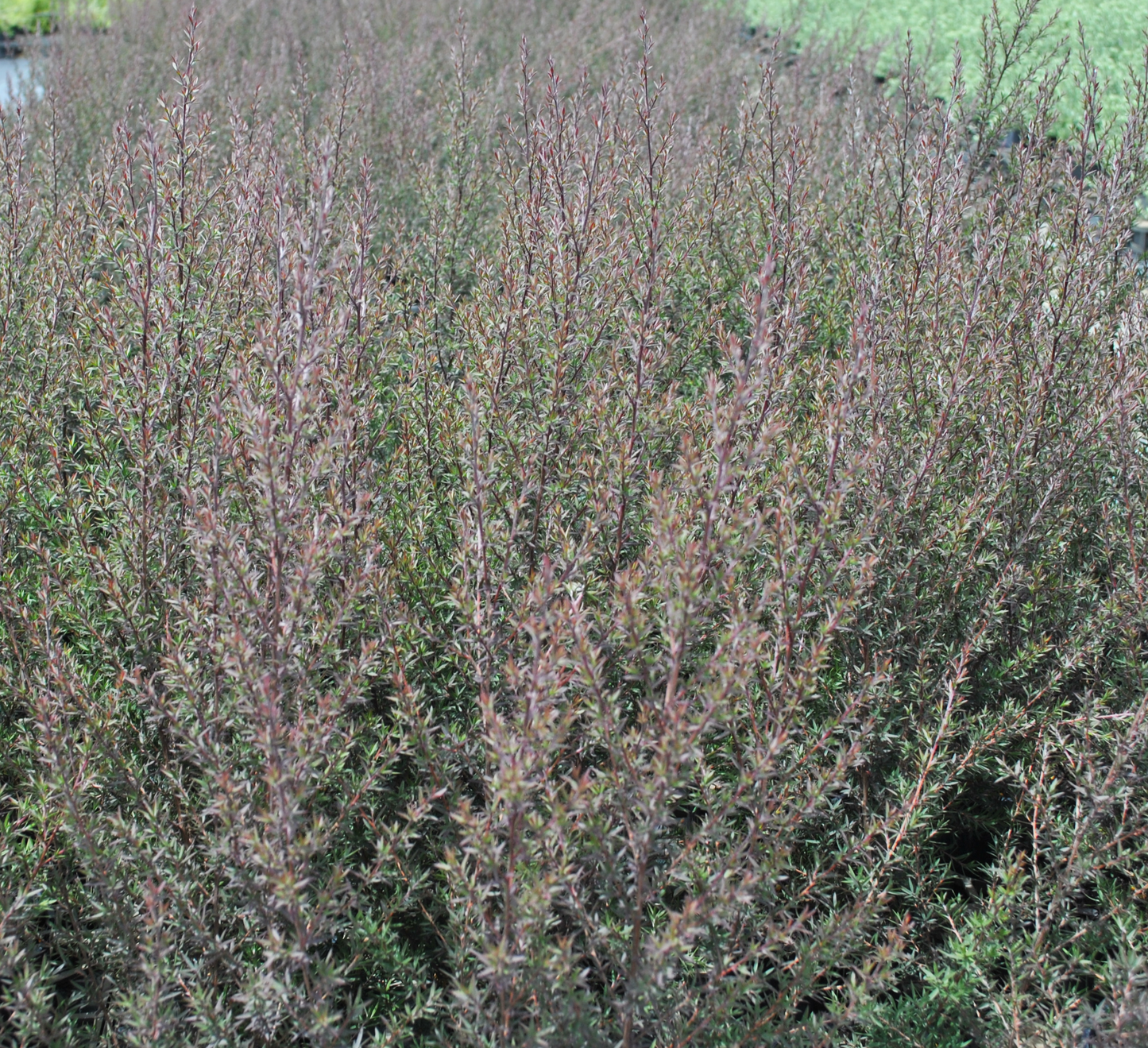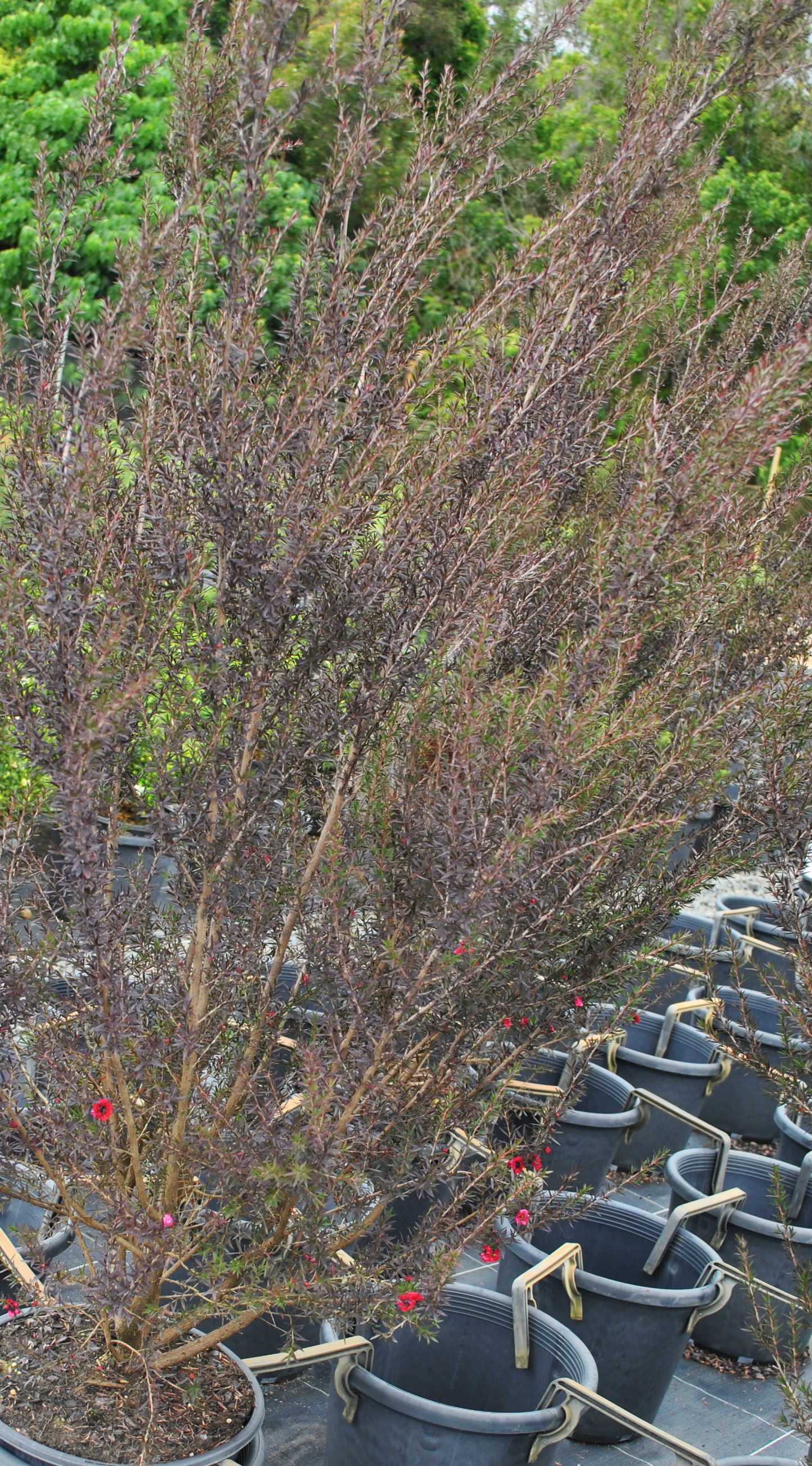1
/
of
4
Burgundy Queen Tea Tree (Leptospermum scoparium 'Burgundy Queen')
Burgundy Queen Tea Tree (Leptospermum scoparium 'Burgundy Queen')
Regular price
$15.65
Regular price
Sale price
$15.65
Unit price
/
per
Taxes included.
Shipping calculated at checkout.
Next delivery date:
Couldn't load pickup availability
$80 minimum spend required for checkout.
Why we love this plant!
Why we love this plant!
This striking tea tree variety stands out with its deep burgundy foliage and vibrant pink to red flowers, which bloom prolifically through spring and summer, providing a rich nectar source for bees and pollinators. Adapted to South East Queensland’s climate, it tolerates dry spells and thrives in well-drained soils, making it a great low-maintenance option for native gardens, borders, or informal hedging. Its compact growth habit provides shelter for small birds while enhancing garden biodiversity.
Care Considerations
Care Considerations
Watering preferences:
- Requires regular watering until established, then little to no additional watering is needed.
Mulching preferences:
- Applying mulch may help retain moisture and suppress weeds.
Fertilising preferences:
- Fertilisation is not strictly necessary, but a low-phosphorus fertiliser can be applied once a year.
Pruning preferences:
- Pruning is not essential but may help encourage bushier growth and more flowering
Good to Know:
- Prefers well-drained soil and can tolerate mild frosts.
- Attracts bees and nectar-feeding birds.
Plant Details
Plant Details
| Common uses: | Privacy screening, Pollinator-friendly, Seasonal colour, Drought hardy/tolerant, Low maintenance garden, Robust/Hardy, Coastal garden, Rocky or dry gardens (Xeriscape), Erosion control, Wind protection, Textural interest, and Wow! factor |
| Expected Height Range: | 1.5 m - 2.5 m |
| Spread Range: | 1 m - 2 m |
| Preferred positioning: | Full sun, Partial sun, and Partial shade |
| Flower Season/s: | Winter and Spring |
| Flower Colour/s: |
|
| Plant life cycle: | Perennial |
| Habitat: | A cultivated species that does not have a naturally occurring habitat. Its parent species, Leptospermum scoparium, is native to New Zealand and parts of Australia, where it thrives in open forests, coastal areas, and alpine regions. |
| Leaf information: | Small, dark green leaves with a reddish-purple flush in cooler weather. |
| Preferred Soil: | Prefers well-drained, fertile soil with slight acidity, but adapts to various soil conditions as long as excessive wetness is avoided. |
Share








